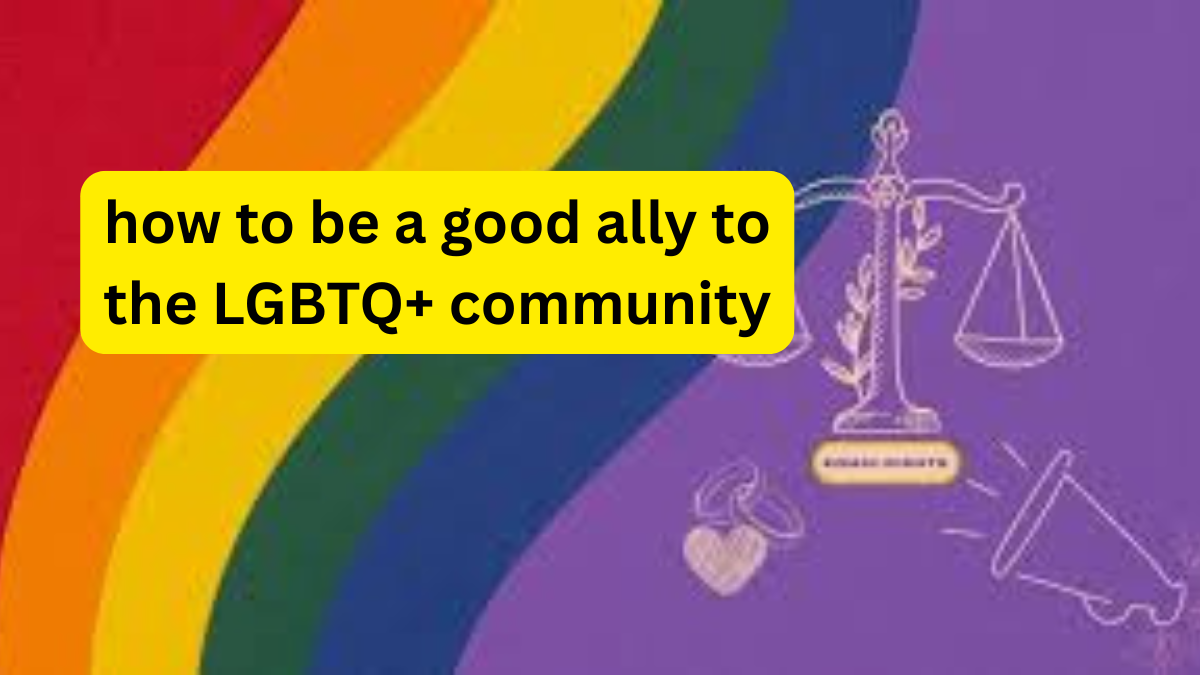How to Be a Good Ally to the LGBTQ+ Community: A Guide to Active Support (LGBT Ally flag,How to be an ally to lgbtq community,How to be an lgbtq ally at work,LGBTQ ally quotes,LGBTQ Ally Shirt,LGBTQ+ Ally Sticker,LGBTQ Ally symbol,LGBTQ ally pin,)
How to Be a Good Ally to the LGBTQ+ Community: A Guide to Active Support
Being an ally to the LGBTQ+ community means actively supporting and advocating for the equal treatment and rights of lesbian, gay, bisexual, transgender, and queer individuals, even if you do not identify as LGBTQ+ yourself. It goes beyond passive acceptance to involve education, action, and a commitment to creating inclusive spaces at work, at home, and in society. This guide provides actionable steps on how to be an ally to lgbtq community and become a more effective advocate.
The Foundation of Allyship: Education and Self-Reflection
Effective allyship begins with a commitment to lifelong learning and examining your own biases. Before you can effectively support others, you must understand the community’s history, challenges, and terminology.
Key Pillars of Allyship:
- Listen and Learn: Center LGBTQ+ voices. Read articles and books by LGBTQ+ authors, listen to their stories, and believe their experiences.
- Educate Yourself: Don’t rely on LGBTQ+ people to explain basic concepts to you. Take the initiative to learn about terms like non-binary, pansexual, and transgender.
- Acknowledge Your Biases: Everyone has unconscious biases. Reflect on your own assumptions and commit to unlearning harmful stereotypes.
Practical Action: How to Be an LGBTQ+ Ally at Work
The workplace is a critical area where allies can make a tangible difference in psychological safety and inclusion. Knowing how to be an lgbtq ally at work is a professional and ethical responsibility.
Using Inclusive Language and Policies
Implementing how to use inclusive language at work and home examples is a fundamental action. This includes:
- Sharing Your Pronouns: Introduce yourself with your pronouns (e.g., “I’m Maria, and I use she/her pronouns”) in meetings and on your email signature to normalize the practice.
- Using Gender-Neutral Terms: Address groups as “team,” “everyone,” or “folks” instead of “guys” or “ladies.”
- Advocating for Inclusive Policies: Support or champion gender-neutral bathrooms, inclusive health benefits, and company participation in Pride events.
Intervening Respectfully
- Correct Misgendering: If you hear someone use the wrong pronoun for a colleague, politely correct them. For example, “I believe Sam uses they/them pronouns.”
- Challenge Offensive “Jokes”: Calmly and clearly state that homophobic or transphobic comments are not appropriate or funny.
Visible Symbols of Support: Flags, Pins, and Apparel
Visible symbols signal to LGBTQ+ individuals that you are a safe person and help normalize allyship. The most recognized is the LGBT Ally flag, which features a rainbow background with a black-and-white “A” shape (representing straight allies) in the center.
Common Ally Symbols and Their Use:
- LGBTQ Ally Pin or LGBTQ Ally symbol: Wearing a pin with the ally flag or a simple rainbow is a subtle yet powerful way to show support in the office or daily life.
- LGBTQ+ Ally Sticker: Displaying a sticker on a laptop, water bottle, or notebook clearly marks your space as inclusive.
- LGBTQ Ally Shirt: Wearing apparel, especially during Pride month or year-round, is a public statement of your commitment.
These items are not just accessories; they are tools for sparking conversation and creating visibility.
A Step-by-Step Guide to Becoming a Better Ally
Allyship is a continuous journey. Follow these steps to build and maintain your practice.
- Listen Actively: Prioritize listening over speaking. Attend to the experiences of LGBTQ+ people without centering your own feelings.
- Speak Up, Not Over: Use your voice and platform to amplify LGBTQ+ voices, not replace them. Advocate in spaces where they may not be present.
- Support LGBTQ+ Owned Businesses and Creators: Put your financial and social support behind the community.
- Donate to Reputable Organizations: Contribute to groups like The Trevor Project, GLAAD, or the National Center for Transgender Equality.
- Commit to the Long Haul: Allyship isn’t just for Pride Month. It requires consistent effort and a willingness to make mistakes, apologize, and do better.
Frequently Asked Questions (FAQ)
Q1: What if I make a mistake, like using the wrong pronoun?
A: Apologize briefly and sincerely (“I’m sorry, I meant ‘they'”), correct yourself, and move on. Don’t over-apologize or make the person comfort you. The key is to do better next time.
Q2: Where can I find powerful LGBTQ ally quotes?
A: Seek out quotes from influential figures like Harvey Milk, Audre Lorde, or Laverne Cox. A simple search for “LGBTQ ally quotes” will yield many inspiring options for sharing or personal reflection.
Q3: How can I be an ally to someone who hasn’t come out yet?
A: Create an environment where coming out feels unnecessary because all identities are assumed to be valid. Use inclusive language, challenge homophobic remarks, and display ally symbols. Don’t pressure anyone to disclose their identity.
Q4: Is buying an LGBTQ Ally Shirt enough?
A: It’s a great start for visibility, but it’s not enough on its own. Allyship must be backed by consistent action, education, and a willingness to confront injustice, even when it’s uncomfortable.
Take the Next Step in Your Allyship Journey
Being an ally is an active and evolving practice. Your commitment to learning and acting makes a real difference. We encourage you to move beyond reading—donate to a cause, have a respectful conversation, or visibly display your support. The journey starts with a single step, and your ongoing effort is what truly creates a more inclusive world.
